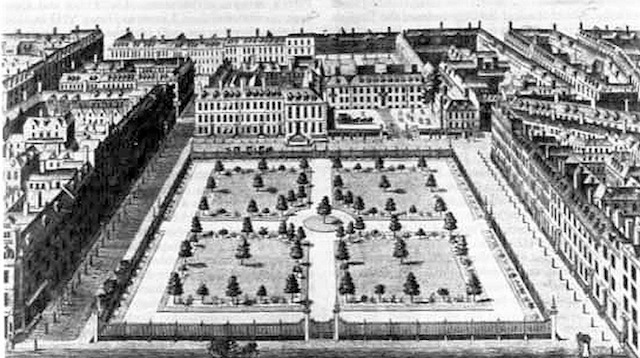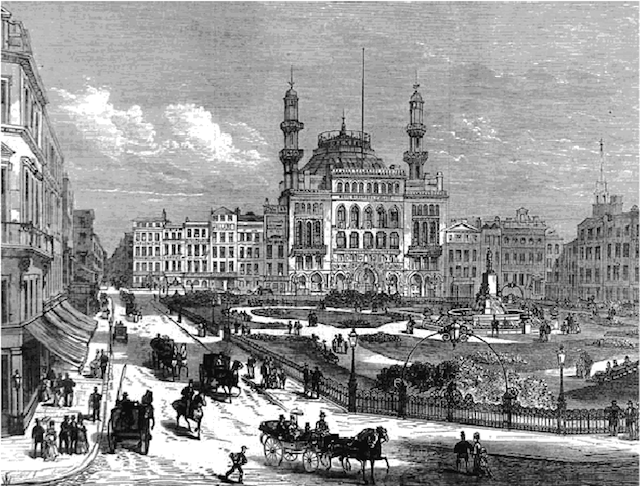Simon Flynn, author of The Science Magpie, explores a little-known side to the West End hub.
If Time Out had existed in 1775, it would undoubtedly have carried a version of this intriguing advert:
Museum, Leicester House, Feb. 3, 1775
Mr. Lever’s Museum of Natural and other Curiosities, consisting of beasts, birds, fishes, corals, shells, fossils extraneous and native, as well as many miscellaneous articles in high preservation, will be opened on Monday 13th of February, for the inspection of the public. […] As Mr. Lever has in his collection some very curious monkies and monsters, which might disgust the Ladies, a separate room is appropriated for their exhibition, and the examination of those only who chuse it.

The Holophusicon (‘embracing all of nature’), as it was sometimes called, was located at Leicester House on the northern side of Leicester Square. It held the natural history collection of Sir Ashton Lever, which visitors could view for half a guinea. Totalling around 27,000 objects, the collection included a hippopotamus, an elephant, hummingbirds, pelicans, peacocks, bats, lizards and scorpions, as well as many artifacts picked up during the explorer James Cook’s second and third voyages. Writing in 1778 to her cousin Frances (author of the bestselling Evelina), Susan Burney described the infamous room that might ‘disgust the Ladies’ as
… full of monkeys – one of which presents the company with an Italian Song – another is reading a book – another, the most horrid of all, is put in the attitude of Venus de Medicis, and is scarce fit to be looked at.

The collection had initially been shown at Lever’s country house, Alkrington Hall, near Manchester, before moving to London because it wasn’t making enough money to sate Lever’s addiction for collecting. Despite its popularity, and visits from George III and the Prince of Wales, the London museum couldn’t sustain itself either. Lever ended up selling it by lottery in 1786. (He offered the collection to the British Museum first but they sadly declined and it ended up fragmenting.) Never quite able to cope with this loss, Lever committed suicide less than two years later.
In 1783, while the Holophusicon was still going strong, the anatomist John Hunter began renting a large house on the east side of the square, where he ran a medical school and museum. Hunter was another prodigious collector, and people now had the opportunity to view skeletons of kangaroos from one of Cook’s voyages, as well as that of Charles Byrne, an Irish man measuring 7′ 7″. The acquisition of the latter, which cost Hunter the equivalent of £50,000 in today’s money, is at the centre of Hilary Mantel’s 1998 novel The Giant, O’Brien. Unlike Lever’s collection, Hunter’s was thankfully bought by the government after his death and now forms the core of the Hunterian Museum at the Royal College of Surgeons, 35-43 Lincoln's Inn Fields.
Seventy years later, in the aftermath of the hugely popular Great Exhibition of 1851, Leicester Square witnessed the creation of its most ambitious scientific establishment yet. Sadly, it also proved to be its last. Dominating the eastern side of the square and built in the Moorish style with a ‘towering minaret’, ‘lofty dome’ and ‘abundant use of chromatic decoration’, The Royal Panopticon of Science and Art’s aim, according to its form, discoveries in science and art’.
It opened its doors to the general public in 1854 to considerable fanfare. No expense had been spared inside either. Placed beneath the dome was a fountain, the central jet of which shot up almost 100 feet; at the entrance of the western gallery was the largest organ in England at the time and a lift (referred to as an ‘ascending carriage’) that could carry eight persons at a time, transported visitors to the photography gallery. Among the displays were an aurora borealis apparatus, which enabled the creation of artificial ‘northern lights’, a ‘crystal cistern for diving’ and a gas cooker. In the basement could be found lecture theatres where demonstrations were regularly given. The Royal Panopticon was clearly a place that you would have to visit many times in order to appreciate all the marvels it contained. It was, the Morning Post enthused, ‘the most magnificent temple erected for the purposes of science’.

It may well have been, but few of the public paid homage. Despite its royal charter, Queen Victoria failed to grace the altar of this ‘temple’ and two years later it was declared bankrupt. The building was renamed The Alhambra and became a circus, then a music hall and finally a theatre before being demolished in 1936 to make way for the Odeon cinema. The organ was sold to St Paul’s Cathedral and the scientific gods fled Leicester Square never to return.
By Simon Flynn. Simon's book The Science Magpie: A hoard of fascinating facts, stories, poems, diagrams, and jokes, plucked from science and its history, is out now from Icon Books.
Simon's final sentence notwithstanding, science will return to the square on 27 January 2013, for Helen Keen's Spacetacular!...an evening of science and entertainment themed around space exploration. See here for more details.



